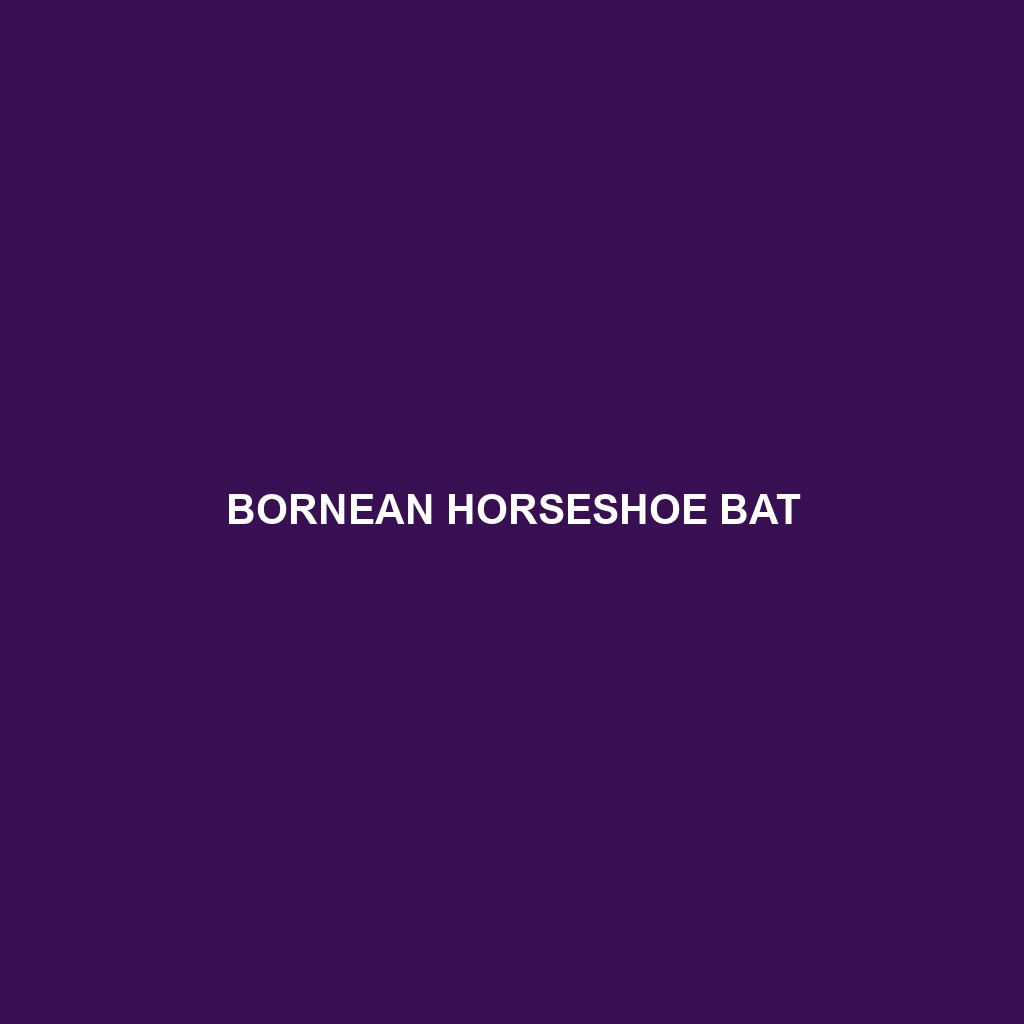Bornean Horseshoe Bat
Common Name: Bornean Horseshoe Bat
Scientific Name:
Habitat
The Bornean Horseshoe Bat primarily inhabits tropical rainforest areas in Borneo, Indonesia, and Malaysia. This species tends to roost in caves, old buildings, and beneath leaves, typically at elevations ranging from lowland forests to montane regions. The warm, humid climate of these environments is crucial for their survival and reproductive activities.
Physical Characteristics
The Bornean Horseshoe Bat exhibits a wingspan of approximately 25 to 30 cm and weighs between 5 to 15 grams. Its fur is usually a mix of gray and brown tones, allowing it to blend into the forest environment. The bat’s most distinctive feature is its characteristic horseshoe-shaped noseleaf, which aids in echolocation. Its tail, which extends beyond the tail membrane, and large, rounded ears also play significant roles in its navigation and hunting capabilities.
Behavior
Bornean Horseshoe Bats are nocturnal mammals, engaging in active foraging during the night. They are known for their agile flight patterns and can often be seen darting around trees and foliage as they hunt for insects. Socially, they tend to roost in colonies, exhibiting a communal lifestyle. These bats typically utilize echolocation to navigate and hunt, emitting high-frequency sounds to locate their prey.
Diet
The Bornean Horseshoe Bat primarily feeds on a diet of insects, with a particular preference for moths and beetles. Their foraging strategy includes catching prey mid-flight, and they may also consume smaller insects found in vegetation. This insectivorous diet plays a vital role in controlling pest populations in their habitats.
Reproduction
Bornean Horseshoe Bats typically engage in mating during the late rainy season, with females giving birth to a single pup after a gestation period of about 3 months. The young are born well-developed and start flying within a few weeks. Maternal care is crucial during the early stages, as mothers often roost together for warmth and protection.
Conservation Status
The Bornean Horseshoe Bat is currently classified as vulnerable due to habitat loss, deforestation, and human encroachment. Conservation efforts are underway to protect their natural habitats and promote awareness of their ecological importance.
Interesting Facts
– The Bornean Horseshoe Bat is a key species in maintaining the ecological balance of tropical rainforests by controlling insect populations.
– They have a unique social structure and are known to communicate through a variety of vocalizations.
– Echolocation is so precise that these bats can detect objects as fine as a strand of spider silk.
Role in Ecosystem
Bornean Horseshoe Bats play a critical role in their ecosystems as natural pest controllers. By preying on insects, they help to reduce the population of species that could otherwise become pests to plants and crops. Furthermore, their droppings serve as vital fertilizers, enriching the soil and supporting plant growth in their habitats.
